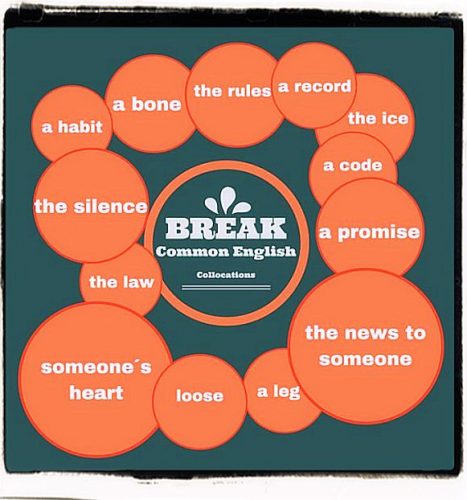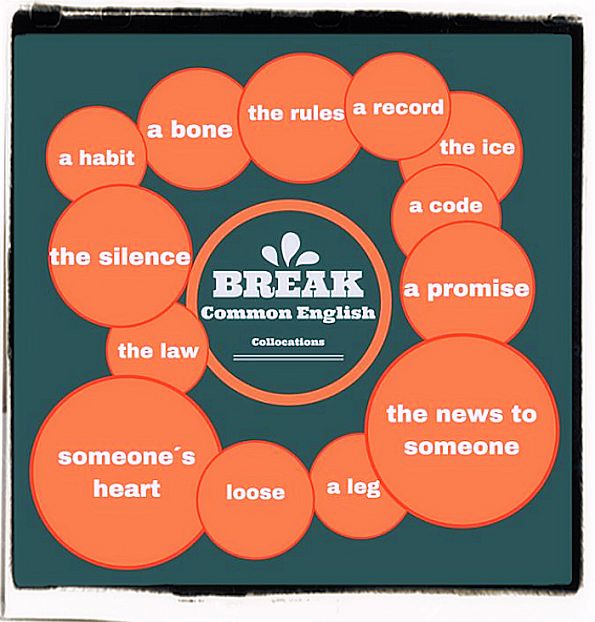
English collocations words, an analysis of this important aspect of the language with rules, examples and references to the main collocations dictionaries.
The most vital part of any language is “vocabulary”, that is why, while learning any language, we give greater importance to learning and understanding the vocabulary. As we are covering most of the vocabulary in the business world and business corresponding to accounting, today, we will focus mainly on collocation, different types of collocations, and their examples. The basics of collocations in English grammar and the significance of various types of collocations are discussed here.
Imagine a student writing an essay on the environment. She knows the themes she wishes to cover and the ideas and arguments to get across. She already has a stock of useful vocabulary; especially high-content nouns like environment, pollution, ozone layer. What is missing are the words that can link these high-content vocabulary items together into a coherent whole – a narrative or an argument.
Pollution is a problem, but what needs to be done about it? Looking up the entry for pollution in the Oxford Collocations Dictionary and skimming down to the verbs section offers the choice of avoid/prevent, combat/control/fight/tackle, cut/Limit/minimize/reduce or monitor. With the back-up help of a good monolingual learner’s dictionary (such as the Oxford Advanced Learner’s Dictionary) if need be, the student can choose the most appropriate verb, the one that expresses most exactly what she wants to say.
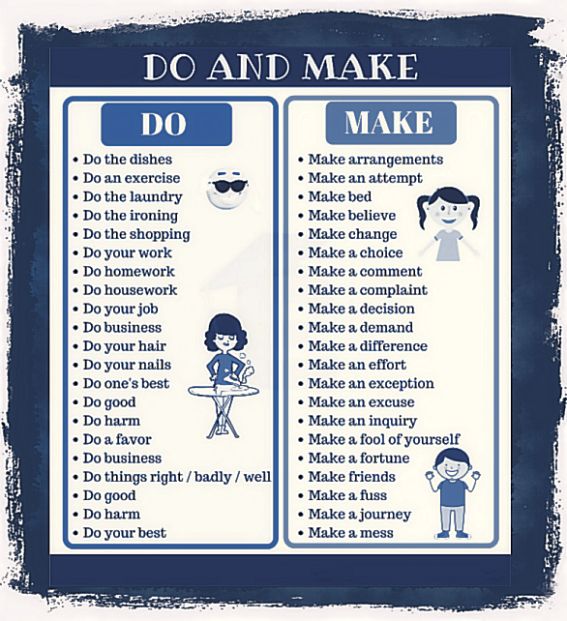
What is collocation?
Collocation is the way words combine in a language to produce natural-sounding speech and writing. For example, in English you say strong wind but heavy rain. It would not be normal to say *heavy wind or *strong rain. And whilst all four of these words would be recognized by a learner at pre-intermediate or even elementary level, it takes a greater degree of competence with the language to combine them correctly in productive use. To a native-speaker these combinations are highly predictable; to a learner they are anything but.
Collocation can also be defined as a group of words that seem to belong together. Collocation is a grouping of familiar words which seems to be connected because of their continual use and thus creating a coherent meaning through his associations. Suppose, it is said “heavy rain” instead of “big or strong rain” conveys the implication that it is raining heavily.
“Strong rain” or “big rain” offers the same meaning, in the collocation example mentioned above. Also, both of them are grammatically correct, but the utilization of big rain or strong rain will sound outlandish. Thus, we use heavy rain for better English. There are various examples where we use a specific set or group of words to make it sound a natural fit. Collocation can also be defined as a group of words that are expected to be together. Some more instances of collocations are “to do homework”, “to make the bed”, “to take a risk”, etc.
Combinations of words in a language can be ranged on a cline from the totally free – see a man/car/book – to the totally fixed and idiomatic – not see the wood for the trees. This idiom is not only fixed in form, it also has nothing whatever to do with wood or trees.
Between these two extremes, there is a whole range of nouns that take the verb see in a way that is neither totally predictable nor totally opaque as to meaning. These run from the fairly “weak” collocation see a film (which elementary students learn as a “chunk” without pausing to reflect that this is not quite the literal meaning of see) through the “medium strength” see a doctor to the “stronger” collocations of see danger/reason/the point. All these combinations, apart from those at the very extremes of the cline, can be called collocation. And it is combinations such as these – particularly in the “medium-strength” area – that are vital to communicative competence in English.
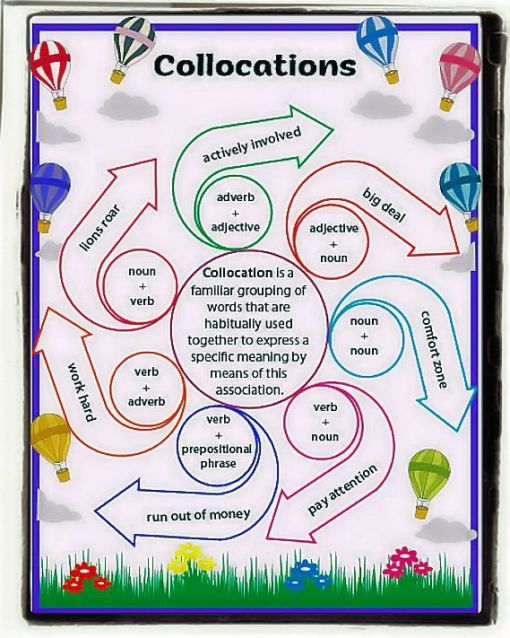
Why is collocation important?
Collocation runs through the whole of the English language. No piece of natural spoken or written English is totally free of collocation. For the student, choosing the right collocation will make his speech and writing sound much more natural, more nativespeaker-like, even when basic intelligibility does not seem to be at issue. A student who talks about “strong rain may make himself understood, but possibly not without provoking a smile or a correction, which mayor may not matter. He will certainly be marked down for it in an exam.
But, perhaps even more importantly than this, language that is collocationally rich is also more precise. This is because most single words in the English language – especially the more common words – embrace a whole range of meanings, some quite distinct, and some that shade into each other by degrees. The precise meaning in any context is determined by that context: by the words that surround and combine with the core word – by collocation.
A student who chooses the best collocation will express himself much more clearly and be able to convey not just a general meaning, but something quite precise. Compare, for example, the following two sentences: This is a good book and contains a lot of interesting details. This is a fuscinating book and contains a wealth of historical detail.
Both sentences are perfectly ‘correct’ in terms of grammar and vocabulary; but which communicates more (both about the book under discussion and the person discussing it)?
Besides the above-stated reasons, there are other reasons as well for using collocations. These are discussed as follows.
To make the use of the English language straightforward and exciting. To assist in sticking to a pre-decided and proper structure of the English language, as it follows a particular order. To assist in embellishing the English language. To make better use of words or groups of words by conferring it in a more understandable form. To improve the use of the English language, and facilitate its innovation.
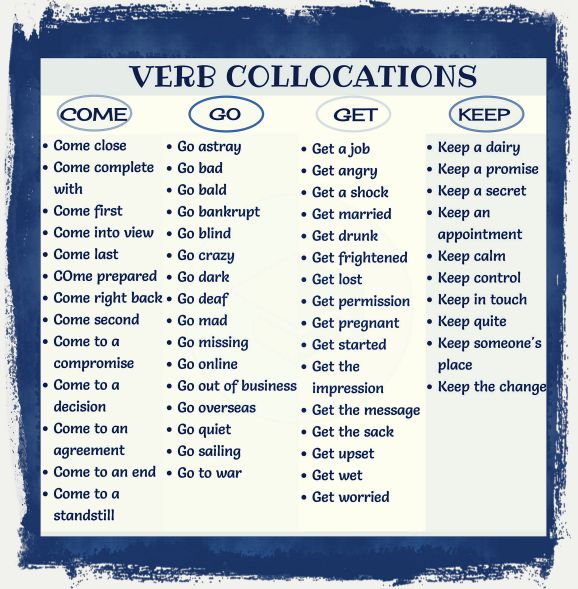
Types of Collocations
‘The full range of collocation’, as well as implying collocations of different strengths, also covers all the following types of combination:
adjective + noun: bright! harshlintense/ strong light
quantifier + noun: a beam/ray of light
verb + noun: cast!emit/give/provide/shed light
noun + verb: light gleams/ glows/shines
noun + noun: a light source
preposition + noun: by the light of the moon
noun + preposition: the light from the window
adverb + verb: choose carefully
verb + verb: befree to choose
verb + preposition: choose between two things
verb + adjective: make/ keep/ declare sth safe
adverb + adjective: perfectly/not entirely/environmentally safe
adjective + preposition: safe from. attack
plus short phrases including the headword: the speed of light, pick and choose, safe and sound
Most of the collocations can be called “word collocations”, that is, these are the precise words that combine with each other: small fortune cannot be changed to little fortune, even though small and little would seem to be synonymous. There is another area of collocation that might be called “category collocation”, where a word can combine with any word from a readily definable set. This set may be quite large, but its members are predictable, because they are all words for nationalities, or measurements of time, for example.
Verb collocations are those types of collocations that are used extensively and tend to involve a verb + noun phrase in the day to day situations. Here are the examples of these words so you can interpret them in a better way. In every instance, the verb has other meanings as well, but the outcome of combining it with the other words is a verb collocation.
Pay a Bill: I refuse to pay a bill if I am not satisfied with the service.
Come Prepared: Come prepared to the school tomorrow, since you have a presentation.
To Find a Replacement: Indian team requires to find a replacement for Sachin as early as possible.
Adjective Collocations
When you add adjectives with nouns and adverbs, it forms adjective collocations. Here are a few examples of adjective collocations.
Deep: Deep feeling, deep holes, deep trouble, deep sleep.
Heavy: Heavy rainfall, a heavy drinker, heavy snow, heavy traffic.
Strong: Strong smell, strong body, strong sense, strong denial.
Big: Big disappointment, big failure, big mistake, big surprise.
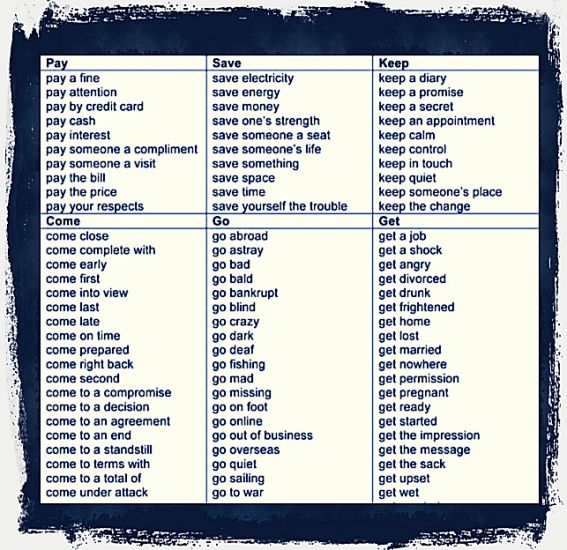
Noun Collocations
In Noun collocations, a verb and a noun can be used to form a group of words. Service industry, tea leaves, dogs bark, water flows, paper flutters, blurred vision, critical analysis.
Business Collocations
Most of the time, collocations are critical in several types of businesses and work scenes. There are multiple ways in which you can make a collocation with the help of verbs, nouns, adjectives, and adverbs. They can be mixed with keywords and a business expression can be made.
Some of the Important Business Collocations are as follows.
Security Blanket / Cash Flow / Opinion Poll / Make Money / Forgive a Debt / Counterfeit Money / Key in a PIN / Annual Turnover / Go Bankrupt / Cease to Trade / Hard-earned Money /Deposit a Check / Close a Deal / Open an Account
Why use a Collocations Dictionary?
A normal dictionary, whether monolingual or bilingual, splits up meaning into individual words; it has a lot of power in dissecting the meaning of a text. Its power is more limited when it comes to constructing texts. Good learner’s dictionaries give as much help as they can with usage, with grammar patterns clearly explained, register labels and example sentences showing words in context. Modern dictionaries are increasingly giving attention to collocation. But they are still hampered by trying to provide a whole range of information about any word besides its collocations.
A grammar provides an analysis of the general patterns that exist in a language. But its productive power is limited by the degree to which it generalizes in order to come up with “grammatical rules”. A collocational dictionary doesn’t have to generalize to the same extent: it covers the entire language (or a large part of it!) on a word by word, collocation by collocation basis. It manages this by not attempting to account for every possible utterance, only for what is most typical.
By focusing on the specific rather than the general, a collocations dictionary is also able to “pre-digest” a lot of the grammar involved, presenting collocates in their most typical form in context, even if this is not the usual dictionary citation form. For example at the entry for baby, you will find the collocation be teething, reflecting the fact that this verb is always used in the progressive tenses. Use the collocations dictionary systematically and you become much more aware of the extent to which English makes use of the passive, an aspect of grammar that even advanced students may be reluctant to put to full productive use.
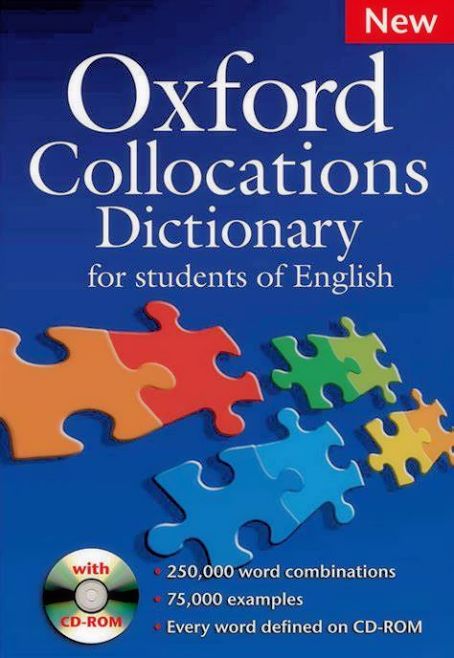
By covering the language systematically from A-Z, a collocations dictionary allows students to build up their own collocational competence on a “need-to-know” basis, starting from the words they already know – or know in part. Occasional, or even regular, collocations exercises in coursebooks cannot fulfil this role, although they do a useful job of raising the profile of collocation as an essential feature of the language, and teach some useful collocations in the process.
For details of collocations words see:
The Oxford Collocations Dictionary
McMillan Collocations dictionary
For details of English phrasal verbs see the following:
English phrasal verbs (Article on this blog)
Longman Dictionary of Phrasal Verbs. (free book downloadable on archive.org)
Phrasal verbs dictionary online
Main phrasal verbs with Italian translation
For details about Idioms you can read the following article:

